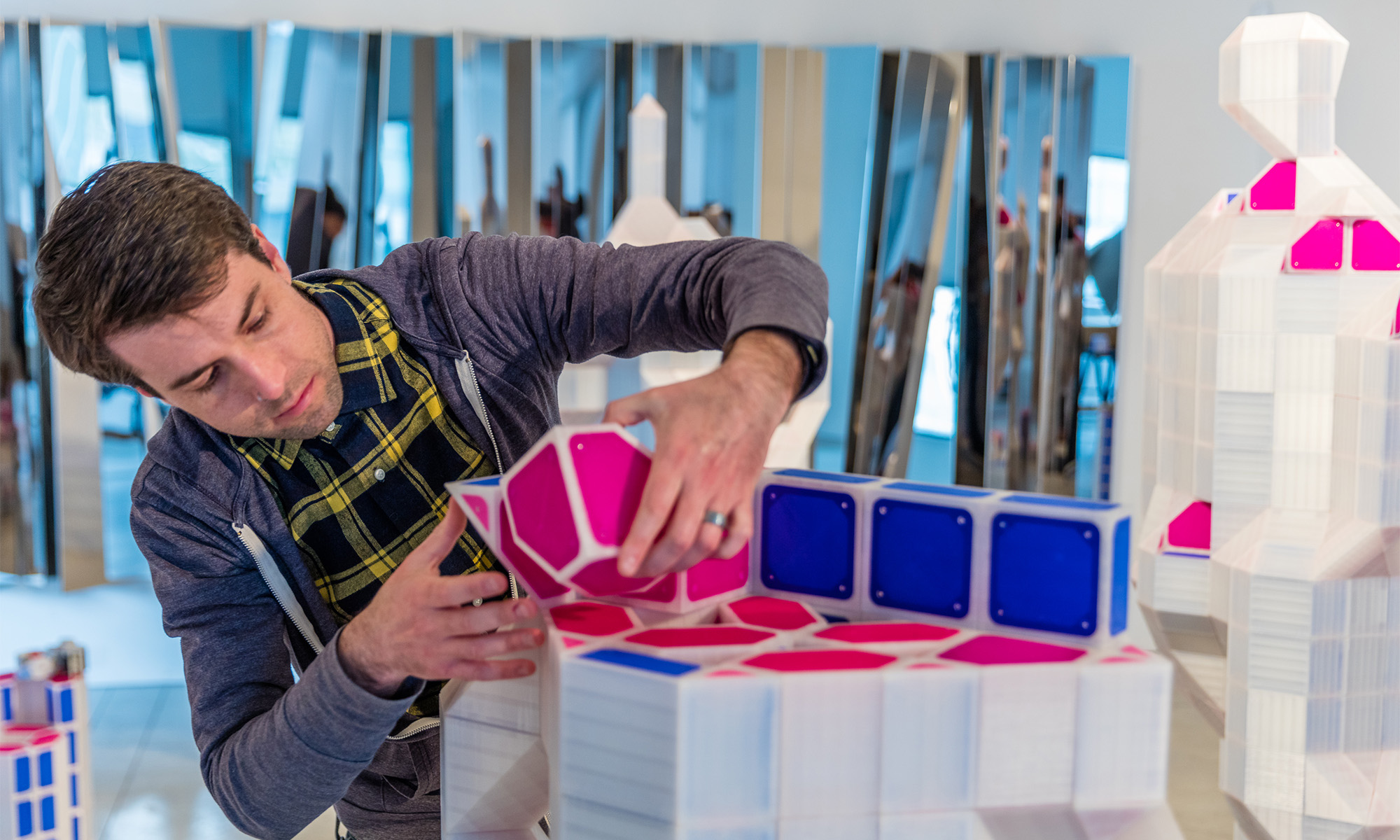Self-Similarity is a property in which individual pieces are similar in composition to the sum of the pieces. Think of it as Russian matryoshka dolls where each piece is buried within one another (Agnati et al, 2009). Self-Similarity is a “meta” property and can be seen in nature as the result of recursion. Recursion is the process in which a system takes the input it receives, changes it a little and feeds it back out. Examples of this in nature are coastlines, Romanesco Broccoli and Peacock feathers. Self-similarity in nature suggests an underlying tool that humans can use for structuring, modeling and improving man made pieces (Lidwell, 2010).
Example 1 (UPD Source): Valley of Seahorse, Smaller and Smaller, & Mona Lisa Mosaic
This is the example provided in Universal Principles of Design. They include images of the Valley of Seahorses, artwork by M.C. Escher and a photomosaic by Robert Silvers.The Valley of Seahorses are a region of the Mandelbrot Set that shows self-similarity on every level.The artwork titled Smaller and Smaller by M.C. Escher is comprised of reptilian forms pieced together to create a tunnel. The photomosaic by Robert Silvers uses 800 classic art images to create a larger image of the Mona Lisa.
Example 2 (Internet Source): Internet Traffic
Internet or WWW traffic itself exhibits behaviors consistent with self-similarity (Crovella and Bestavros, 1996). This image represents internet traffic in a fractal model where hubs or websites are represented. The larger hubs represent the popular websites and the smaller ones represent the less tess traveled sites (Nucilli, www.ranker.com). Each large hub is made up of smaller hubs thus graphically, the traffic produced by internet traffic is an example of Self-similarity.
Example 3 (Non-Internet Source): Leaf from fern tree
 This is a fern leaf I found in the backyard of my house. It is an example of self-similarity through the recursion process in nature. Each leaf is composed of smaller but similar leafs which in turns makes a larger leaf.
This is a fern leaf I found in the backyard of my house. It is an example of self-similarity through the recursion process in nature. Each leaf is composed of smaller but similar leafs which in turns makes a larger leaf.
References
Agnati, Luigi F., et al. “Mosaic, Self-Similarity Logic and Biological Attraction Principles.” Communicative & Integrative Biology, vol. 2, no. 6, 2009, pp. 552–563., doi:10.4161/cib.2.6.9644.
Lidwell, William, et al. Universal Principles of Design 125 Ways to Enhance Usability, Influence Perception, Increase Appeal, Make Better Design Decisions, and Teach through Design. Rockport, 2010.
Crovella, Mark E., and Azer Bestavros. “Self-Similarity in World Wide Web Traffic.” Proceedings of the 1996 ACM SIGMETRICS International Conference on Measurement and Modeling of Computer Systems – SIGMETRICS 96, 1996, doi:10.1145/233013.233038.
“13 Natural Instances Of ‘Self-Similarity’ That Hint At The Math Behind The Cosmos.” Ranker, www.ranker.com/list/weird-cases-of-self-similarity/rylee_en. https://www.ranker.com/list/weird-cases-of-self-similarity/rylee_en


